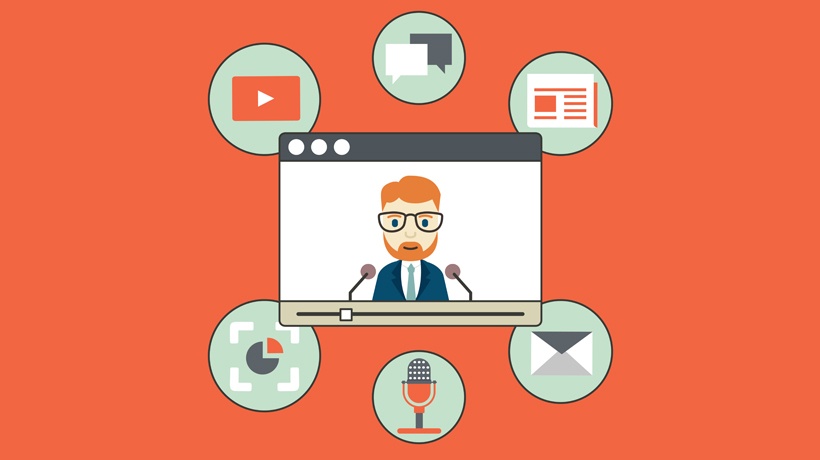Using Facebook Live As An Interactive Video Platform
So, how can you use Facebook Live an an interactive video platform?
In Interactive Video Platforms Are The Future Of Online Learning, Steve Gottlieb presents a persuasive and popular argument: That asynchronous learning, often in the form of traditional course-based eLearning, disconnects the learner from the social interactions that foster collaborative learning.
Today, technology is increasingly mediating our social interactions. To date we have not adopted a really good way of facilitating interaction in the context of eLearning experiences. If you are in the constructivist or connectivist camps of learning, you can appreciate the impact that collaboration has on instruction.
5 Aspects Of Facebook Live That Will Persuade You To Use It As An Interactive Video Platform
In this article, I’ll present Facebook Live as an interactive video platform to use for eLearning. Simply put, Live allows users of the mobile Facebook app to broadcast live video to their friends or the larger public. In the past, mostly celebrities used this platform, but it has now been opened up to the larger Facebook population.
An example of what can you broadcast on Live: As I am writing this article, the live video currently being watched by the most people is being streamed by Buzzfeed, who are recording a video of a coffee cup filled with money. The challenge is for residents of Los Angeles to decode the location of the cup to claim the financial prize.
Besides this "non-educational content", here are several aspects of this service that make it appealing as an interactive video platform for eLearning:
1. Interactivity.
The capability for interaction is obviously the main criterion for such a platform, which Live certainly meets. Viewers of a live video can "like", share, and most importantly, comment, within the stream. All these are displayed both to the recorder of the video and everyone else watching. Within the educational context, this allows viewers to ask the instructor questions during a video lesson. It also allows peers to interact with each other.
Facebook Live "best practices" include recognizing and engaging with commenters individually by name. This mirrors the question-answering practice in the classroom. Additionally, video recorders often encourage viewers to comment their thoughts or preferences. This could also be valuable in an educational setting. For example, an instructor of a sales training session on Live could ask viewers to share the pros and cons of a traditional sales method. Then, they can compare and contrast the specific comments with a new sales technique.
This adds personal relevance to the training session and subsequently increases retention. Moreover, after presenting the required information, the instructor could ask viewers if they have additional questions, and then answer them one at a time.
2. Ubiquity.
You might have read the previous section and thought “that sounds a lot like a run-of-the-mill webinar?”. And you would be right, most webinars have the capability for commenting between audience and presenter.
However, where Facebook really pulls ahead (in my opinion) is its ubiquitous nature. As learning professionals, we know that, especially when individuals are not particularly motivated to learn, removing as many barriers to accessing eLearning as possible increases the changes that learners will engage with the content.
To record a Facebook Live video, all one needs is to have the Facebook app downloaded on an iOS or Android device. To watch a video is even more accessible. One only needs a Facebook account and an internet connection strong enough to support streaming. Considering there are over 1.5 billion (yes, with a B) monthly users of Facebook, this is the largest platform offering interactive video capabilities. Youtube is a strong second, with 1 billion monthly users.
Α webinar requires the presenter to send out invitations in advance, attendees to register, and then both migrate to a webinar service at an agreed upon time. However, the odds are most potential "presenters" and "attendees" are already on Facebook.
3. Social Networking Capability.
A corollary of the ubiquitous nature of Facebook is that this interactive video platform is also the largest social network in the world. This means that viewers of an educational video can comment on and share thoughts within the confines of the video. Moreover, they can easily become friends and continue to interact around a topic outside of the confines of one video. On a larger scale, communities of practice can begin to develop organically, and are supported by other Facebook features, such as groups and group messaging.
4. Subscriptions.
Additionally, users can “Live Subscribe” to other users and receive notifications when that individual is streaming live video. This feature is related to the social networking aspect above. Interactive videos are no longer isolated learning events, but can become just one component of a larger learning experience. This experience includes multiple videos over a period of time, streamed to an audience that is a mix of new and returning viewers, and supplemented by a vibrant community that can interact within and outside of videos, all on the Facebook platform.
5. Synchronous And Asynchronous.
Finally, we can all appreciate that sometime life gets in the way and you cannot make it to a live video. Facebook allows those who record live video to make it available after they have recorded it. This way, those who missed it can still engage with the content.
Are there any other aspects of Facebook Live that make it a good interactive video platform? Tweet to me @adamgavarkovs.





